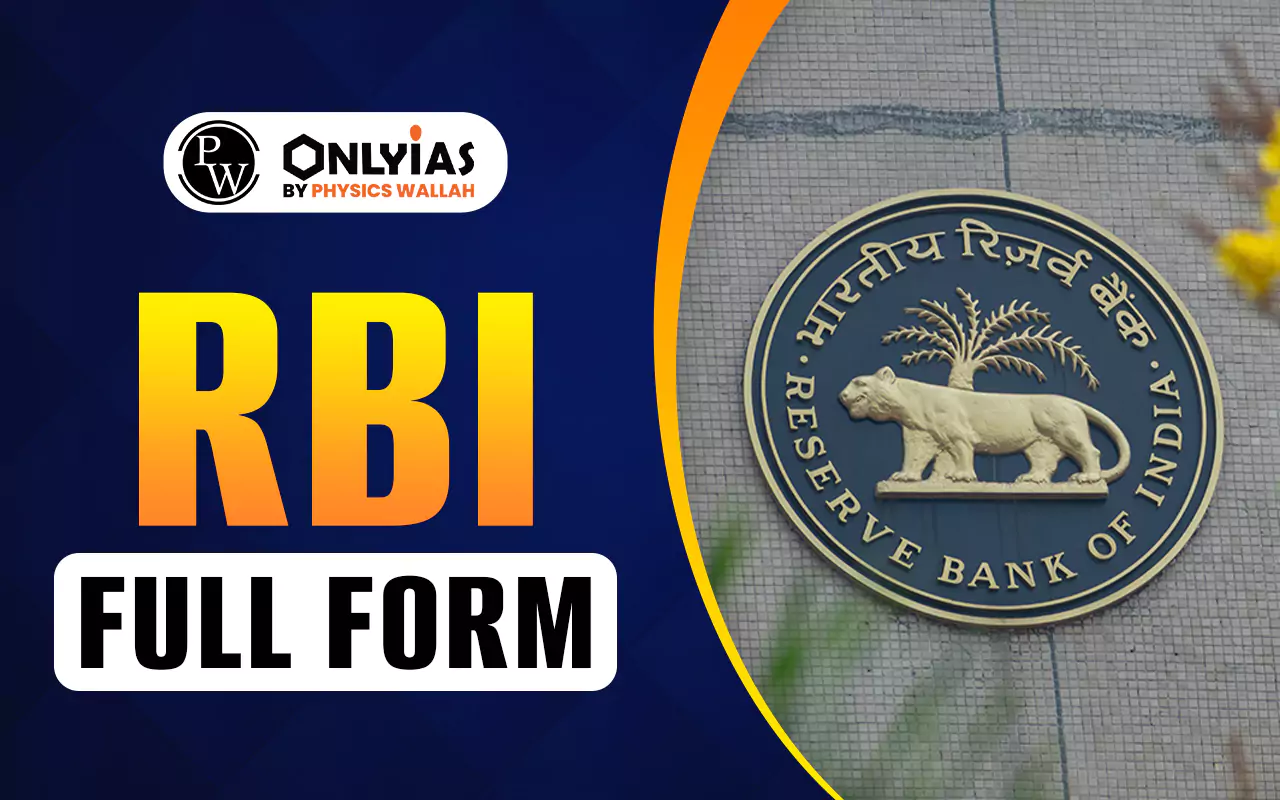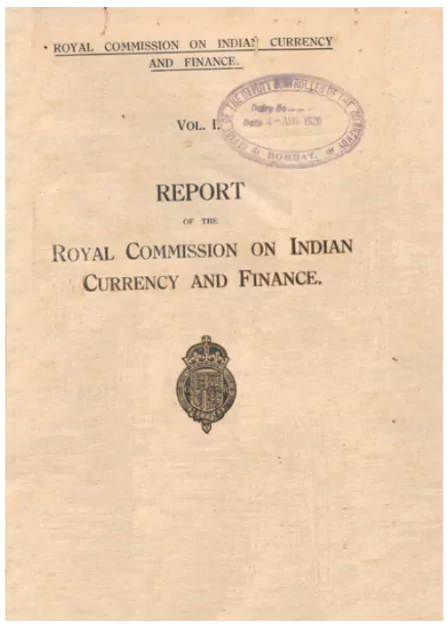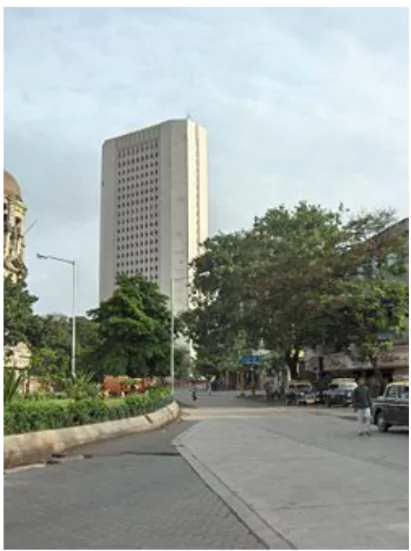RBI Full Form is Reserve Bank of India, the central bank established in 1935. Learn about its history, functions, headquarters, chairman, governance, and vital role in shaping India's monetary policy, economic stability, and financial development.

RBI Full Form is Reserve Bank of India, which is the central bank and apex monetary authority of the country. Serving as the bedrock of India’s financial and monetary systems, the Reserve Bank of India has played a pivotal role in shaping the country’s economic policies, development frameworks, and fiscal strategies.
For aspirants of competitive exams, researchers, and general readers alike, it is essential to know what is RBI full form, its functions, history, governance structure, and present-day significance.
The Reserve Bank of India, abbreviated as RBI, is the nation’s central banking institution, responsible for regulating the issue and supply of the Indian rupee. The institution manages the country’s monetary policy to ensure financial stability and economic growth. The answer to what is RBI full form is becomes crucial when understanding the backbone of India’s economic framework.
| RBI Overview | |
| Aspect | Details |
| RBI Full Form | Reserve Bank of India |
| Established | April 1, 1935 |
| Established Under | Reserve Bank of India Act, 1934 |
| Initial Headquarters | Kolkata |
| Current Headquarters | Mumbai, Maharashtra |
| RBI Headquarters Address | Shahid Bhagat Singh Road, Mumbai – 400001 |
| RBI Governor (Current) | Shri Sanjay Malhotra |
| RBI Governor Since | December 11, 2024 |
| Ownership | Fully owned by the Government of India since nationalisation in 1949 |
| Central Board of Directors | Governor, up to 4 Deputy Governors, 10 nominated Directors, 4 Local Board members |
| Number of Regional Offices | 33 Regional Offices across India |
| RBI Regional Headquarters | Located in Northern, Southern, Eastern, and Western zones |
| Main Functions | Monetary policy, Currency issuance, Financial supervision, Forex management, Government banking |
To document RBI’s extensive journey, it has published five volumes of its institutional history, detailing phases from its establishment in 1935 to major economic reforms until 2008. These volumes cover key events such as:
| History of the Reserve Bank of India | |
| Year/Period | Event/Development |
| 1926 | Hilton Young Commission recommended the establishment of a central bank in India. |
| 1934 | Reserve Bank of India Act, 1934 was enacted, laying the statutory foundation for the establishment of the RBI. |
| April 1, 1935 | Reserve Bank of India (RBI) was formally established as a shareholder’s bank with headquarters in Kolkata. |
| 1937 | RBI headquarters shifted to Mumbai, which remains the central office to this date. |
| 1937–1947 | RBI acted as the Central Bank for Burma (Myanmar) until Japanese occupation and later till April 1947. |
| 1947–1948 | After India’s partition, RBI served as the Central Bank of Pakistan until June 30, 1948. |
| 1949 | RBI was nationalised through the Reserve Bank (Transfer of Public Ownership) Act, 1948, making it fully owned by the Government of India. |
| 1951–1967 | RBI played a central role in India’s planned economic development, focusing on agricultural and industrial credit. |
| 1969 | Fourteen major commercial banks were nationalised. RBI assumed increased regulatory and developmental roles. |
| 1971 | End of the Bretton Woods system posed new global financial challenges, impacting RBI’s exchange rate policies. |
| 1981–1991 | Period of expansionary fiscal policies; RBI faced constraints due to automatic monetisation of fiscal deficit. |
| 1991 | RBI responded to the Balance of Payments (BoP) crisis, leading to economic liberalisation and monetary reforms. |
| 1994 | Board for Financial Supervision (BFS) constituted to strengthen financial regulation. |
| 1997–2008 | RBI implemented structural reforms, improved transparency, and addressed challenges during the Asian and global financial crises. |
| 2008–2016 | RBI undertook post-crisis recovery measures, enhanced financial inclusion, and introduced inflation targeting in monetary policy. |
| 2016 | Demonetisation of ₹500 and ₹1000 notes announced by the Government; RBI played a central role in managing currency circulation. |
| 2020 | RBI implemented various COVID-19 relief measures including moratoriums, liquidity infusions, and interest rate adjustments. |
| December 11, 2024 | Shri Sanjay Malhotra appointed as the 26th Governor of RBI. |
| Present | RBI continues to spearhead monetary policy, digital payment innovation, financial stability, and central bank digital currency (CBDC) pilots. |
The RBI was established on April 1, 1935, under the Reserve Bank of India Act, 1934, based on the recommendations of the Hilton Young Commission. Initially, the RBI headquarters was located in Kolkata, but in 1937, it was permanently shifted to Mumbai, where it continues to operate today.

Source: RBI
The RBI Headquarters is located at Shahid Bhagat Singh Road, Mumbai- 400 001. The institution also operates 33 regional offices across India to facilitate regional banking needs. These RBI regional headquarters help decentralise the bank’s core functions and offer regional insights to strengthen national policies.

Source: Wikipedia
The head of the RBI is officially titled the Governor. The current RBI Chairman, or Governor, is Shri Sanjay Malhotra, who took charge on December 11, 2024, becoming the 26th Governor of the RBI. The central bank is governed by a Central Board of Directors, comprising both official and non-official members appointed by the Government of India for four-year terms. These include:
The RBI functions encompass a wide range of responsibilities aimed at maintaining the financial and economic stability of India. Some of the primary functions of the RBI include:
The RBI role is not just confined to regulation and supervision. It also plays a crucial role in economic development, especially in sectors like agriculture and rural banking. In the post-independence era, RBI was instrumental in setting up several institutions that helped strengthen India’s financial infrastructure. The bank continues to support national development through targeted financial inclusion, banking reforms, and policy initiatives.
The RBI has been instrumental in establishing several premier institutions such as:
Its training institutes include:
Today, the RBI role is not limited to monetary regulation. It actively shapes financial inclusion, consumer protection, and digital innovations such as CBDCs (Central Bank Digital Currencies). Its strategic interventions during financial crises and inflation control measures exemplify its adaptability.
The RBI full form extends beyond its literal meaning. It stands as a symbol of trust, integrity, and guardianship of India’s financial stability. Whether controlling inflation through repo rates or safeguarding forex reserves, its interventions ripple through every citizen’s economic life.
The RBI Full Form—Reserve Bank of India—represents more than just an acronym. It embodies the institutional framework that underpins the Indian economy. Established in 1935, the RBI’s contributions span currency management, financial regulation, developmental support, and global financial representation. From formulating monetary policies to acting as the lender of last resort, the RBI’s role is vast and critical. Understanding what is RBI, its headquarters, governors, functions, and historical evolution is essential for anyone interested in India’s financial architecture.
Ready to boost your UPSC 2025 preparation? Join PW’s UPSC online courses today!
RBI full form is Reserve Bank of India, the central banking institution responsible for regulating monetary policy and currency in India.
RBI is India’s central bank. It controls money supply, interest rates, and manages inflation, making it vital for financial and economic stability.
The Reserve Bank of India was established on April 1, 1935, under the RBI Act, 1934, based on recommendations of the Hilton Young Commission.
Key RBI functions include issuing currency, regulating banks, managing foreign exchange, maintaining financial stability, and formulating monetary policy.
Shri Sanjay Malhotra is the current RBI Governor (often referred to as RBI Chairman) since December 11, 2024, appointed for a three-year term.
The RBI Headquarters is situated in Mumbai, Maharashtra. It was initially set up in Kolkata but was permanently moved in 1937.
<div class="new-fform">
</div>
